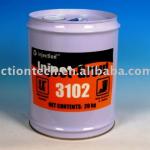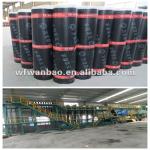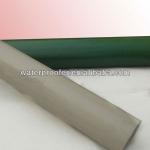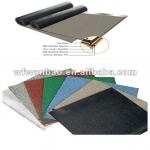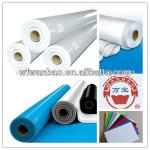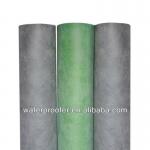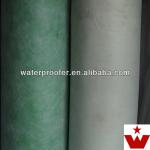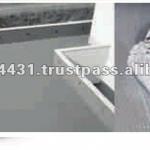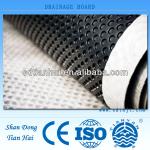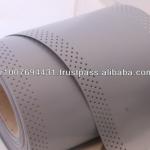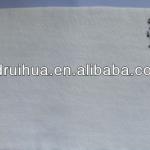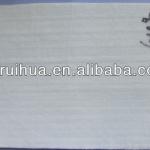(Panel Type) Standard Exterior Wall Coating Materials - IK-101 ~ IK-150
| Type: Other Waterproofing Materials | Place of Origin: Gyeonggi-do South Korea | Brand Name: IK Standard Wall Coating | Model Number: IK-101 ~ IK-150 |
| Color: A wide range of selection (option) | Size: 600mm x 800mm or 600mm x 1200mm (option) | Construction method: sticking to wall | Construction temperature: 0℃ ~ 50℃ |
| Thickness: 6mm or 8mm (option) | Packing unit: 6 or 4 sheets / BOX (depends on the size) | Dying time: 8~ 24 hrs and longer | Waterproof: Exactly acceptable or not (option) |
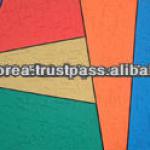
STANDARD EXTERIOR WALL COATING
The most commonly used standard finish material adds the elegance and value to a building.
- Color : A wide range of selection (option)
- Size : 600mm x 800mm or 600mm x 1200mm (option)
- Construction method : sticking to wall
- Construction temperature : 0°C ~ 50°C
- Thickness : 6mm or 8mm (option)
- Packing unit : 6 or 4 sheets / BOX (depends on the size)
- Dying time : 8~ 24 hrs and longer
- Waterproof : Exactly acceptable or not (option)
*There should be differences the statements below between liquid type and panel type as of method, price, and so on. That's because especially the panel type is being manufacuring on themagnesium board. If you want to know about the details, just ask to us!
(1) Product Features
- The most commonly used standard finish material adds the elegance and value to a building
- Construction method : iron plaster
- Construction temperature : 0°C ~50°C
- Packing unit : 18 liters/pail
- Amount required : 2.3~2.7 kg/ square meters
- Drying time : 8~24 hrs and longer
| Division | KS Standard(KS F 4715) | IK Coat(Standard) | |
| Stability at low temperature | No lump, seperation and cohesion | Test O.K | |
| Cracking resistance with initial drying | No Crack | Test O.K | |
| Adhesive strength (Standard) | more than 0.6 | 1.8 | |
| Adhesive strength (After immersion) | more than 0.4 | 0.9 |
(2) Method of Application
A. Check list before the construction work
1) The total system should be constructed from G.L + 150mm.
2) The worker should check if the design and the color of the external wall are suitable before starting the construction work.
3) Be careful for the curing work and the safety management before starting the work.
4) Check the place where the product is loaded and the ramp.
5) Check the conditions of a jobsite before starting the construction work. In case there is something unreasonable, discuss with the supervisor or the owner of a building in advance
6) The company which will work on the construction should receive the education given by INDEX KOREA and it should fully understand the matters that require attention on the jobsite.
B. Adhesion of E.P.S board
1) The E.P.S board should be constructed from the bottom of the external wall of a building, and it should be permanently or temporarily supported.
2) The E.P.S board should be adhered with stopped joints in order to make no joint, making the long side horizontal.
3) The E.P.S board for the windows and the corners should be cut suitably before the construction work.
4) The joints of the E.P.S board should be crossed from the edge.
5) Paste the adhesive on the E.P.S board, taking 6-8 spoons.
6) Immediately and slightly adhere the E.P.S board to the background from the bottom, and press diagonally in order to fit to the end of the adjacent board.
7) In order for the adhesive to be adhered evenly to the background, press the external side of the E.P.S board with the same pressure.
8) In order to have perfect adhesiveness, harden it for 24 hours. During the hardening process, the E.P.S board should not move.
9) When mixing the adhesive with Portland cement, use a drill mixer and perfectly mix at 400~500RPM speed.
C. Surface reinforcement for glass fiber mesh
1) Standard fiber glass mesh
- Paste the adhesive in suitable thickness to the surface of the E.P.S board, using a stainless trowel.
- Immediately soak the standard glass fiber into the adhesive which is not dry, using a trowel. The surface of the adhesive should be treated smooth by use of a trowel in order for the standard glass fiber to be completely soaked.
- In using standard glass fiber, the mesh should be not seen on the surface of the adhesive.
- The joint of the standard glass fiber should be overlapped at least 100mm. The work should be done from the center to the edge.
- In order for the mesh not to be pushed, roll up once in the opposite direction and then, use.
2) High-strength glass fiber
High-strength glass fiber is applied to the bottom (from G.L. to 1500mm) of a building that receives a lot of shocks from the outside. Immediately soak general glass fiber into the adhesive, using a trowel. Make the surface of the shock-reinforcing glass fiber smooth, using a trowel.
D. Finishing Material
1) Once you start to work with a finishing material, you should keep working to the end.
2) For uniform appearance and consecutive work, sufficient efforts, a footing, and equipment should be prepared.
3) The work should be done from the edge of a wall to the corner.
4) A clean stainless trowel should be used.
5) Some finishing materials can be sprayed. At this time, please discuss with the manufacturer for the right construction method.
6) The allowed error of surface smoothness after the work with the finishing material is done should be 6mm per 3m.
E. Sealant
1) It should be the product of the manufacturer approved by INDEX KOREA.
2) The color is determined by the designer and the supervisor.
3) It is denatured silicone so it should not be cracked or hardened after constructed.
| Packaging Detail:6 or 4 sheets in a BOX (Optional. It depends on the size; 600mm x 800mm or 600mm x 1200mm) |
| Delivery Detail:7 Days After comfirming the order |



